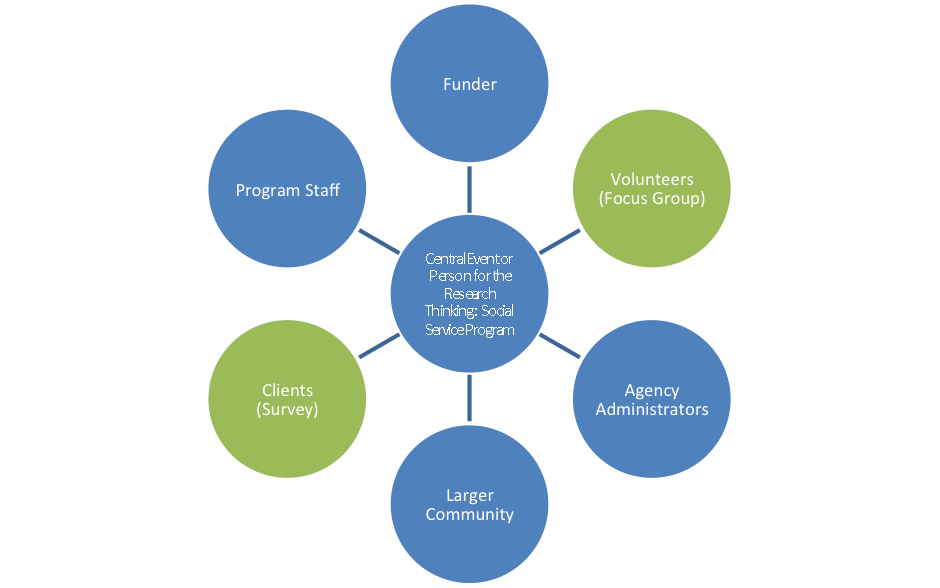Hello, I’m Shirah Hecht, Ph.D, Program Evaluator with Academic Technology Services within the Harvard University Info Tech area. Here is a simple “trick” for beginning to develop a research design.
I call this “system mapping.” You may connect it to stakeholder analysis or concept mapping, since it blends the two in a way – but it goes a bit further than either, for research purposes. It comes from a simple suggestion given to me by my graduate school mentor who taught qualitative field methods at Northwestern University, Howard S. Becker. He credited the sociologist Everett C. Hughes for this method.
Essentially, the technique is to identify a central event or person, then radiate out from there to consider all the constituencies or positions or groups that connect to that central event or person. This is a way of jump-starting your thinking about what the relevant data sources might be and to identify questions about your central topic.
For example, in education, the central event might be the classroom; the radiating circles might identify students, teachers, parents, and administrators, among others. Alternatively, the central circle might hold the student as a central person; the radiating circles then might include the parents, teachers, other students, guidance counselors, testing agencies, etc.
After identifying these outer circles, you can pose relevant questions such as:
- What is the perspective of each constituency on the central event or person? What matters to them? What is their investment in this process or person?
- At what points do they interact with the central event, for the purposes of my research questions?
- What “data” might they hold, whether in terms of process or perspective, to define or address my research questions?
This process also fits in nicely with developing a logic model with the program provider, to develop an evaluation project. Even if you are not logic model-bound, it can frame a good conversation and understanding of the research planning process and the final decisions about data collection.
Here is a simple version of this map, generalized from a program for which I developed an evaluation plan. The green highlights indicate the data collection sources: a focus group with program volunteers and a survey of clients.
Lessons Learned: In research planning, move from the perspective of the constituency to specific research questions for the project.
Hot Tip: Combine this mapping process with the Tearless Logic Model process, to jumpstart the conversation about research plans with program staff.
Rad Resources: Everett C. Hughes offers the sociological eye on any and all processes we might want to research: The Sociological Eye: Selected Papers (Social Science Classics
Do you have questions, concerns, kudos, or content to extend this aea365 contribution? Please add them in the comments section for this post on the aea365 webpage so that we may enrich our community of practice. Would you like to submit an aea365 Tip? Please send a note of interest to aea365@eval.org . aea365 is sponsored by the American Evaluation Association and provides a Tip-a-Day by and for evaluators.

